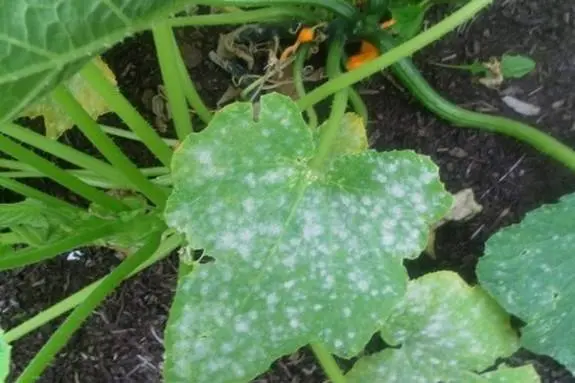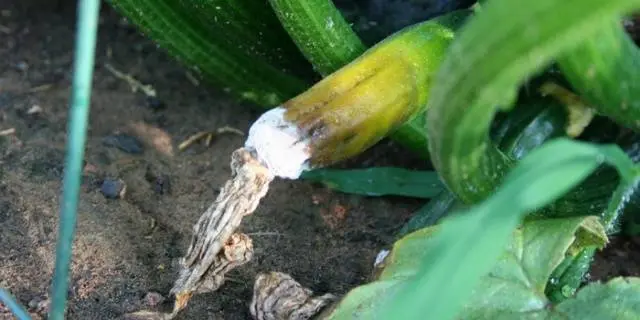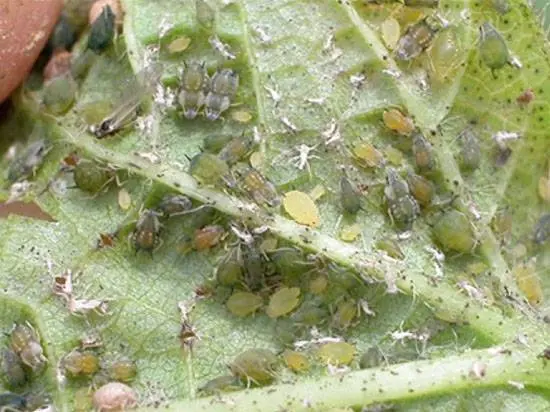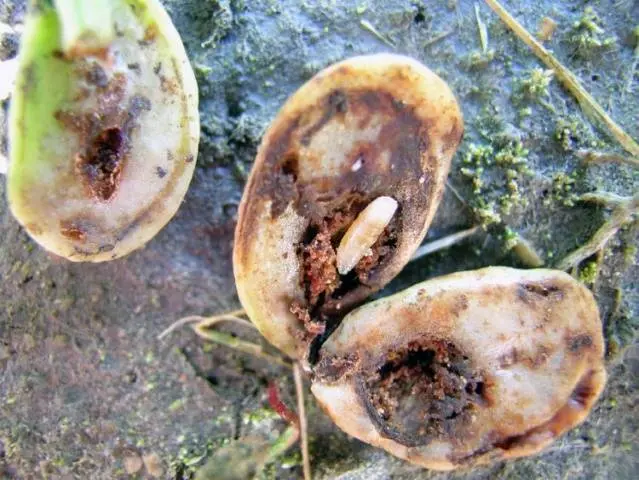Contents
Zucchini are among those crops that can be found in absolutely any area. This annual plant from the pumpkin family received such distribution due to its dietary composition and universal use. What they don’t do with it: add it to the roast, stuff it, not to mention processing it into squash caviar. You can plant zucchini both in a greenhouse and in open ground. In our climate, it is better to leave the greenhouse for other more heat-loving crops, and plant the zucchini directly in the ground. Our article will tell you how to germinate seeds and plant seedlings of zucchini in the ground.
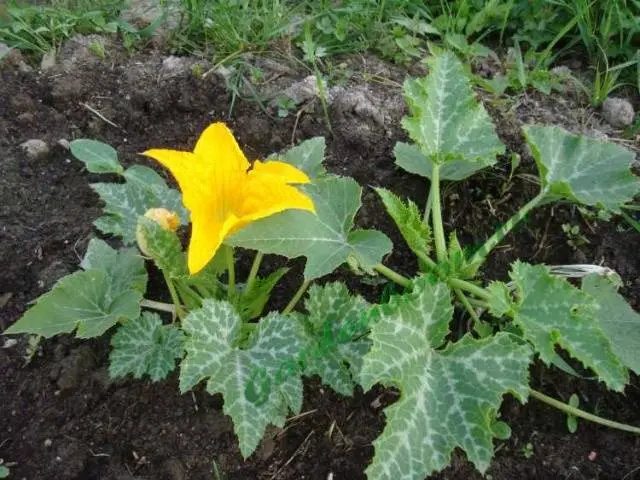
Soil and planting requirements
Zucchini plants do not require careful care from the gardener, but they are in great need of the nutrient composition of the soil. Of course, zucchini can grow on poor soils, but the yield of such plants will be extremely small. Before applying all available fertilizers to the soil, it is necessary to determine its composition:
- If the soil is peaty, then it is recommended to make compost or humus. Two kilograms of fertilizer will be enough for one square meter. In addition, you can add one tablespoon of potassium sulfate and superphosphate, and a few tablespoons of ash.
- If the soil is dominated by sand, then heavier soil will need to be introduced into it. Sod land, humus with sawdust and peat are suitable for this. Only then can fertilizers such as ash and superphosphate be applied.
- With chernozem on the beds, additional fertilizer can not be applied.Experienced gardeners still recommend diluting the black soil with sawdust at least once every few seasons. For one square meter, 2 kilograms of sawdust will be enough. When applying, you can add a couple of tablespoons of mineral fertilizer.
- In clay soil, it is recommended to add sawdust, peat and humus at 3 kilograms per square meter.
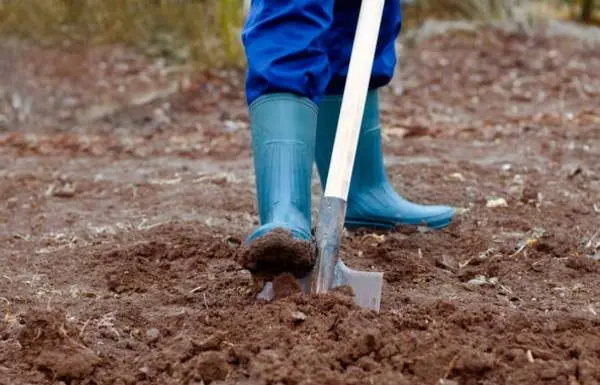
All these preparations are best done in the fall, in extreme cases, in the spring, after the snow has melted on the beds. After fertilizing, the bed must be dug up to a depth of 25 centimeters, tamped and watered. If fertilizers are applied in the spring, then it will be useful to cover the bed with any covering material. This will allow fertilizers to decompose faster and saturate the earth. If the soil is being prepared in the fall, then there is no need to cover the ground.
We decided on the composition of the soil, but where is it better to plant zucchini? The most optimal place for them will be a sunny and not windy place. For those gardeners who follow the rules of crop rotation, it is recommended to plant zucchini after plants:
- cabbage, both early and white;
- potatoes;
- tomatoes;
- eggplant;
- any root crops;
- port.
Good results are obtained by planting plants of this crop after green manure.
Places after plants are not suitable for zucchini:
- cucumbers;
- Pumpkins
- squash.
Zucchini not only should not be planted after these crops, but also next to them. They are able to cross-pollinate with each other, thereby having a negative impact on the quality of the future crop.
Many gardeners and gardeners try to plant zucchini in the same place for many years in a row. This is fundamentally wrong. Zucchini very quickly suck out all the nutrients from the soil, thereby making the bed unsuitable for themselves and other crops of the pumpkin family. Without fertilizing and saturating the soil with the necessary minerals, it is impossible to plant zucchini in the same place for several years in a row.
If a completely new piece of land is chosen for zucchini, on which no crop has grown before, then the first thing to do is to dig it up and apply fertilizer. In the process of digging, it is necessary to remove not only the roots of weeds, but also the larvae of pests.
Preparing and planting seedlings
The quality of the future harvest is affected not only by the place of planting, but also by the quality of the seedlings. In order for young zucchini plants to have good immunity and increased yields, the process of preparing seedlings must be taken seriously.

Start preparing seedlings of zucchini should be 3 – 5 weeks before the expected date of planting in a permanent place. And the very first thing to do is prepare the zucchini seeds for planting. This preparation includes:
- Selection of substandard seeds – plant only intact and full zucchini seeds. It is very easy to understand that a seed is not empty. To do this, all seeds are immersed in water for several minutes. Floating zucchini seeds are discarded, and those that sink to the bottom are left.

- Seed warming – in order to wake up the zucchini seeds, it will be enough to put a container with them on the battery overnight.
- Seed soaking Don’t just leave the zucchini seeds in the water. In order for them to swell, they need to be evenly spread out on a damp cloth. It is not recommended to use gauze to soak zucchini seeds. Seeds in the process of soaking give young roots that can get tangled in gauze and break.
For planting zucchini seeds, you can use both purchased soil and self-made soil from equal parts of soddy soil, humus and sand. In both cases, before planting seeds, the earth must be spilled with boiling water. Such a measure will not only disinfect it, but also protect young plants from the insidious black leg.
As a container for seedlings of zucchini, you should choose either seedling pots or cups 10–15 centimeters deep and up to 8 centimeters wide. Zucchini seedlings have a very delicate root system that does not tolerate any transplanting and picking. That is why it is recommended to plant no more than 3 seeds in one container.
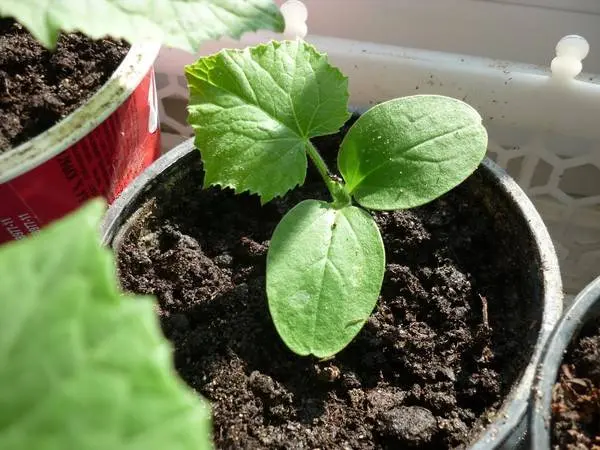
In prepared containers with earth, small pits are made up to 3 centimeters deep. Seeds are laid horizontally in them, sprinkled with earth and watered.
A video that will clearly show how to plant zucchini seeds for seedlings:
At first, the cups with seeds should stand in the warmest place in the house, as a rule, this is a place near the battery. With this temperature regime, zucchini seeds will be able to sprout already on the 5th day. After that, they can be rearranged on a well-lit windowsill and grown at a temperature of 18 to 23 degrees. Already at this stage of growing seedlings of zucchini, frail and weak shoots will be visible. If they are pulled out of the ground, then they can understand a strong sprout behind them. Therefore, they must be carefully cut with scissors at the root.
Watering seedlings of zucchini is carried out every 10 days and only with warm water. In this case, it is important not to fall on the leaves, but to water only under the stem. Young seedlings are fertilized only twice:
- After 10 days from germination, young zucchini plants are fertilized with a pale solution of potassium permanganate with the addition of superphosphate at the rate of 2 grams per 1 liter.
- After 1 – 1,5 weeks from the first feeding, seedlings of zucchini are fertilized with any organic matter. Most often, bird droppings and manure are used for zucchini.
Very often, in the conditions of an apartment, due to a lack of lighting, the seedlings of zucchini are greatly extended. In this case, do not pinch the top of the plants, like tomatoes. It is only necessary to pour the earth to the stems of the seedlings. Such a tricky trick stimulates the formation of roots on the stretched stems of zucchini seedlings.
As soon as the first 2-4 pairs of leaves are formed in squash plants, they should be transplanted to a permanent place. If the seedlings of zucchini are overexposed, then its root system will flood the entire pot and the plants will begin to turn yellow.
In our climatic zone, seedlings of zucchini are planted on unprotected beds from mid-May to the end of July. At the same time, experienced gardeners advise planting seedlings in parts. This technique will extend the fruiting period of zucchini plants.
On the selected bed make small holes up to 5 centimeters deep. The optimal distance between adjacent pits will be 50 -70 centimeters.
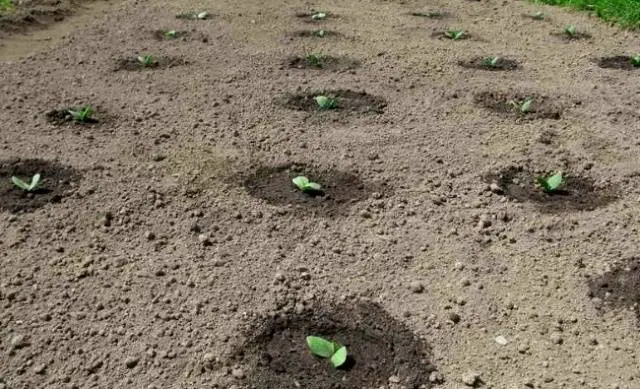
As a rule, seed producers indicate the recommended planting pattern on the seed package.
If seedlings of zucchini were grown in cups, then before planting, the plants must be carefully removed from them. If peat pots served as a container for seedlings, then it is not necessary to take out the plants. In both cases, squash plants are buried in the hole to the first cotyledons.
There are two opinions regarding watering planted seedlings of zucchini:
- Water the bed before planting seedlings.
- Water the bed after planting, directly under the root.
There are no special differences between them, so each gardener uses the method that is more convenient for him.
It is recommended to mulch the land in the garden near each zucchini plant. This will not only maintain the desired moisture in the soil, but also maintain the optimum temperature. After the young zucchini plants are planted and mulched, the bed is covered with a covering material.
At the same time, it is important to slightly drown the edges of the bottle in the ground so that it is not blown away by the wind.
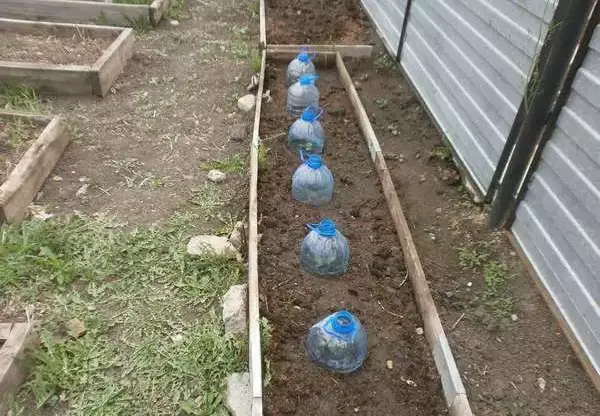
Caring for young zucchini plants
As noted above, zucchini is not very demanding to care for. Despite this, the gardener will still have to give them a little attention, which includes:
- Hilling – this procedure should be carried out only in the phase of the 4th or 5th sheet. Hilling will allow zucchini plants to grow an additional root system.
- Watering – this is the most important thing in caring for zucchini plants. Their plants should be watered not only regularly, but also quite plentifully. Before the formation of ovaries, one plant needs up to 10 liters of water, and after that even more – about 12 liters. As soon as young zucchini appear on the ovaries, the frequency of watering should be increased. Zucchini is very sensitive to the temperature of the water used for irrigation. They like warm water from 22 to 25 degrees. But for irrigation with water below 15 degrees, zucchini will respond with a sharp decrease in the quantity and quality of ovaries, which will affect the crop. During watering, it is very undesirable to get on the leaves of zucchini plants. It is best to water the plants under the root.
- Weeding and loosening – for the whole season they are held no more than 2 – 3 times. If the beds with plants are mulched, then the gardener can safely skip these procedures.
- Feeding – fertilizing zucchini is carried out twice. First, zucchini plants are fed in the active flowering phase. For this, mineral fertilizers containing phosphorus, potassium and nitrogen are used. Then the squash plants are fertilized at the beginning of fruit formation with any fertilizer that does not contain nitrogen, such as ash. If the zucchini is not gaining weight well, then additional fertilizing with nitrophoska or urea can be done, but not more than once every 2 weeks.
You can learn more about caring for zucchini plants from the video:
Possible diseases and pests
Most often, zucchini plants are affected by the following diseases:
- cucumber mosaic – even the most inexperienced gardener will immediately be able to identify this disease. The leaves of squash plants are covered with yellowish or greenish spots and tubercles. The carriers of this disease are aphids and ants, so it is impossible to completely protect plants from mosaics. Today there are many drugs that will help to cope with cucumber mosaic on zucchini plants, for example, Aktara and Aktelikt. Of the folk methods, the most effective are infusions of onion peel and garlic. They need to be sprayed with infected zucchini plants. But it is worth remembering that it is possible to stop any disease on plants of this crop only at the initial stage.

- Mučnistaâ rosa – manifests itself in the form of a white coating on the leaves. First, old leaves are affected, and then the whole plant. Powdery mildew is easily tolerated by the wind, so when the first symptoms occur, the fight against the disease should be started immediately. Of the chemicals, Nitrafen, Kefalon and Carboran have proven themselves well. You can also spray zucchini plants with a solution of ash.

- White rot – the most common and most dangerous disease of zucchini growing in open beds. It affects plants as a result of improper care and adverse weather conditions. Unlike other diseases, it develops not only on plants, but also on zucchini, softening them to a mushy state. If white rot occurs, all infected plants and squash must be removed. Then treat the foci of the disease with chemical preparations containing copper, for example, Kuproskat or Oxyhom. You can also sprinkle the hearths with lime or crushed coal.

Of the pests, zucchini plants most often affect:
- Melon Caviar – spraying plants with infusions of tobacco and yarrow, as well as the chemical preparation Iskra DE, will help to cope with it.

- sprout fly – its larvae are contained in manure, so if the gardener does not plant it well in the soil, then in the spring they will begin to feed on zucchini plants. The introduction of Fufanon and Karbofos preparations into the soil will help to cope with them. You can also sprinkle the beds with zucchini plants with ash, pepper or tobacco dust.

If the growth of zucchini seedlings planted in the ground is not allowed to take its course, but is taken care of in time, then the likelihood of diseases and pests is minimized.
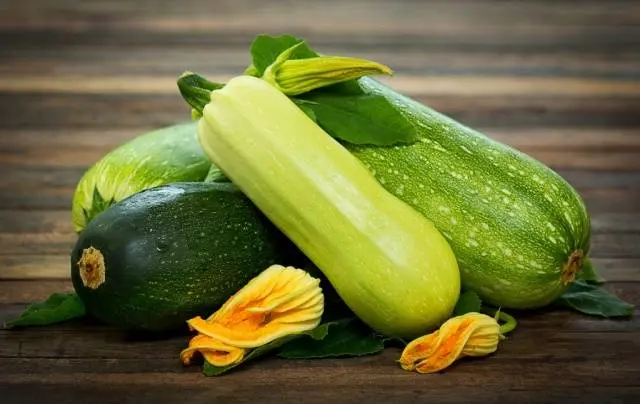
And the result of such plant care will be an excellent harvest, which, no doubt, will pay off all the efforts of the gardener.












